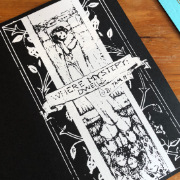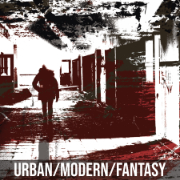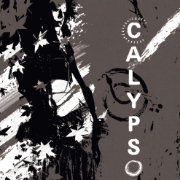emotional factors in ttrpg selection

filed under game design on 07 Apr 2023 tagged design, theory, game feel, and friday
Note, I haven’t been blogging, but my itch page is frequently updated, if you want to see what I’m up to lately.
Emotional factors in ttrpg selection
This is not an essay on emotions in ttrpgs! A topic near and dear my heart, of course, but one I tend to cover obliquely in my works instead of blog posts. Instead, it’s a discussion of why we might pick one ttrpg over another, in a broad sense.
Recently I read a fascinating article from 2003 on Emotional Design about our emotional attachment to things, and I’ve been obsessed with translating it into a ttrpg context. And into an actual ttrpg ruleset, because that’s how I roll; the result (a generic journaling game!?!) will be up on my itch.io eventually. Anyway, the study (paraphased through my brain) discusses how there are three main ways we like a thing, ways that are weighted differently based on the thing’s perceived purpose.
-
Visceral. It’s aesthetic; it looks good. It has the “wow!” factor. It’s that gut feeling, usually visual, that makes someone pick this book up and buy it, even if it’s not what they were looking for, even if it costs a bit more, even if it has obvious typos or clunky prose. It doesn’t say anything about the work’s fitness as a game, or worksmanship of the other aspects (beyond that someone cared enough to invest time and resources) but it satisfies the very real desire to experience aesthetics.
-
Functional. It works. It’s designed to a purpose and fit for it. It meets your needs, whether that’s to facilitate play, to support an experience, or to inspire creativity. This is hard to draw lines over, as, in ttrpgs, function is so subjective. That also makes it hard to place a personal value on a work, as first one must define the intended purpose and then determine if it meets it, and the success of the traditional purposes of ttrpgs depend on so many factors (and people) outside the book you’re holding. For me, this causes my assessment of function to skew towards the first and third categories, because those are more easily quantifiable.
-
Prestige, or what the study calls “reflective”, which is apt, but like “emotional design” is really hard to call out from the obvious meaning inherent in the term. In the study, this is considering what other people will think about you if you choose this, and being influenced by that. It’s keeping up with the Joneses. It’s buying the brand name because it’s the best because it’s the brand name. This isn’t an uncommon motive in ttrpg hobby circles, with shelfies and FOMO kickstarters the norm. One admirable expression of it I’d even argue is core to the hobby, enough that I’d call it a purpose, too: buying a book you know you likely won’t run, and reading it while enjoying imagining how your group would enjoy it, and think more highly of you as a GM for running it for them.
I believe that each of these motivations has equal validity, in context of the umbrella of ttrpgs, and of personal agenda for play; they may not all carry the same weight with you (they certainly don’t with me) but that doesn’t make someone with a different motive wrong. In a real sense, checking these three motives each time we purchase allows us to winnow out the products that won’t meet our needs, to reduce the incoming tide of options down to a manageable few that speak to us viscerally, functionally, and socially.
I also think that we could all stand to be a bit more introspective when choosing a work to support with our dollars, to consider why this piece and not that piece, and to consider what message we’re sending to creators about what will attract dollars and attention when we do.


